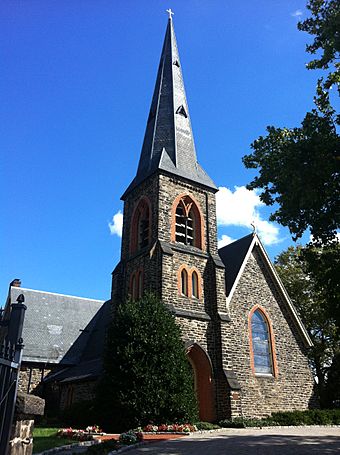St. John's Episcopal Church (Baltimore) facts for kids
|
St. John's Protestant Episcopal Church
|
|

Bell tower of St. John's Protestant Episcopal Church
|
|
| Location | 3009 Greenmount Ave., Baltimore, Maryland |
|---|---|
| Area | 5 acres (2.0 ha) |
| Built | 1849 |
| Architectural style | Gothic Revival |
| NRHP reference No. | 74002214 |
Quick facts for kids Significant dates |
|
| Added to NRHP | March 27, 1974 |
St. John's Episcopal Church, also known as St John's in the Village, was a historic church building in Baltimore, Maryland. It was built a long time ago, in the 1800s. The church is located in an area that used to be a small village called Huntingdon. Today, this area is part of the Waverly community in northeast Baltimore.
The church building has a special look called Gothic Revival style. This means it was designed to look like the grand churches built in Europe many centuries ago. It has pointed arches and tall windows. The church was first built in 1847. There is also a cemetery on the church property.
St. John's Protestant Episcopal Church was added to the National Register of Historic Places in 1974. This means it is recognized as an important historical place in the United States. The church closed its doors in April of 2023.
Fun Facts About St. John's
- A famous band called All Time Low played their very first show here in 2003!

